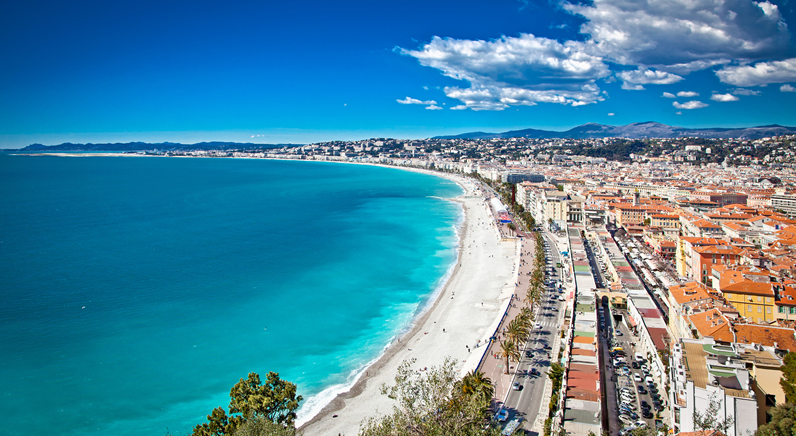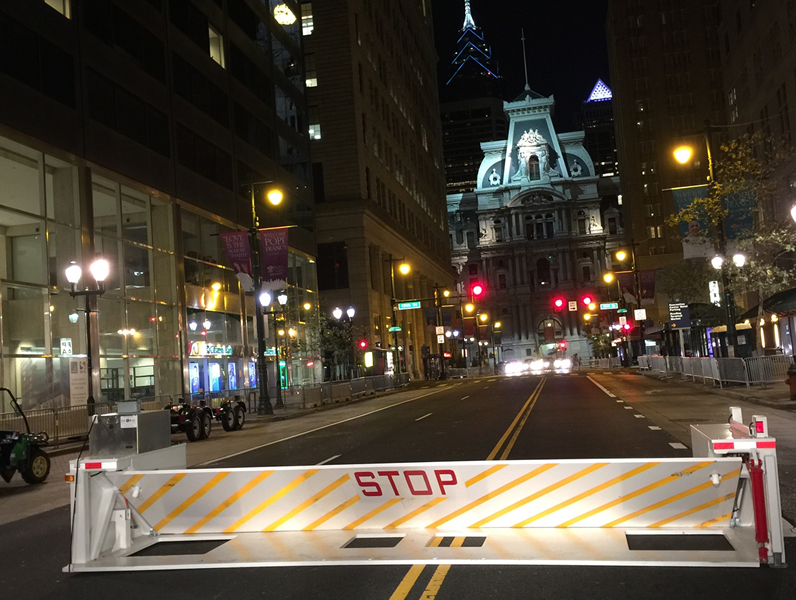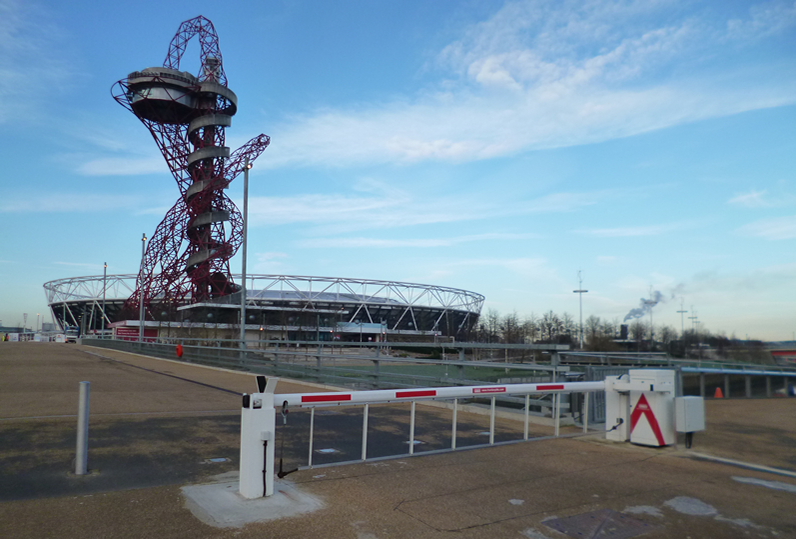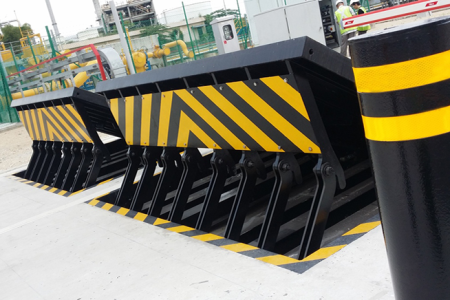Hostile vehicle mitigation – putting the brakes on crowd attacks after Nice
Tim Compston, Features Editor at Security News Desk, weighs-up the challenges of crowded space protection in light of the ongoing terrorist threat and recent events in Nice, France.
Nice has once again brought into sharp relief the clear and present danger that terrorists pose to large crowds of people at major events, especially in our towns and cities. Given this stark reality now is an opportune moment to take a closer look at how the modus operandi of the terrorists is changing – with trucks potential weapons – and what physical security measures, can, potentially, be employed to stop attacks in the first place or at least mitigate their impact.
Radicalisation
In many ways the carnage wrought on Nice, which resulted in the deaths of 83 people – and three more subsequently – was simply a physical manifestation of the way that radicalised individuals are now being encouraged to engage in ‘lone wolf’ or small cell attacks using whatever is close-to-hand. This is something which the Editor-in-Chief at Security News Desk, Philip Ingram, flagged up in the immediate aftermath of the Nice attack which, in his words, was ‘the continuation of a tragedy’.
The tragedy of Nice
Looking in more detail at the lead-up to the unprecedented events which unfolded on the 14 July in Nice, the lorry in question was, apparently, hired a couple of days earlier and driven by a 31 year old Tunisian – who, initial reports suggested, wasn’t on the security services’ radar. He appeared to have been self-radicalised. Undoubtedly, this is an ongoing problem for the authorities across Europe especially, as in some cases such radicalisation can happen in as little as 48 hours.
During the evening of the incident, Nice’s Promenade des Anglais was crowded with families in celebratory mood having watched fireworks and an earlier French air force display. Subsequently French media, citing police sources, reported that the perpetrator had been able to gain access to the area with his lorry – which should have been closed to vehicles – nine hours prior to the actual attack by claiming, when asked by the police, that he was delivering ice cream.
What is now thought to have been a pre-planned attack started at 10.30 pm (local time) with the lorry breaching barriers near the children’s hospital. Witnesses saw a motorcyclist following and then managing to open the door of the lorry but failing to stop it and two police officers opening fire in the early stages but also to no avail. Bouhel then accelerated his lorry towards the crowds gathered on the promenade, zig-zagging to deliberately target groups of men, women and children, for around a mile and a quarter. After a gun battle with Bouhel, police further down the promenade were eventually able to bring the vehicle to a halt outside the Palais de la Mediterranee but sadly, by that stage, it was too late for the hundreds who had been injured or killed.

Euro 2016 concerns
For the French, the positive mood after the security efforts around Euro 2016 was soon a distant memory with, once again, the Government under pressure to explain how something like this could have happened. There were earlier signs, months before, that the terrorists were seeking to target crowds but, understandably, much of the authorities’ attention was focused on Euro 2016 which concluded just prior to Nice.
When we interviewed Rob Walker, part of the London-based travel security team at International SOS and Control Risk, and the functional lead for analysts around the world, last Spring about the risks which might face those attending Euro 2016 – of which Nice was one of the venues – he did say that the heightened security at the sports grounds might push terrorists to look elsewhere for victims: “The double perimeter security at host stadiums will make these facilities harder to target. One of the upshots of this is that alternative areas may be targeted instead, such as around stadiums where large crowds gather.”
As no real opportunity for something on the scale of the multiple Paris attacks materialised for ISIS, and its sympathisers during Euro 2016, it was perhaps not too surprising, after the Championship’s conclusion that things might escalate. Unfortunately, this time, it was the inhabitants of Nice who found themselves in the firing line.
Hostile vehicles
Placing what transpired in Nice into a wider context, although nothing on this scale had happened in Europe before, this is not the first time that we have witnessed vehicles being used in anger by extremists, or disturbed individuals, and is unlikely to be the last. Back in December 2014, for example, a van sped into a crowd at a Christmas market in Nantes, France, hurting 11 people, five seriously. At the time it was reported that the driver shouted ‘Allah Akbar’ before stabbing himself, shedding some light on his potential motives. A spokesperson for the Interior Ministry was quoted as saying that it appeared to be a deliberate act.
For their part the Israelis have also had to contend with a succession of vehicle-related attacks on groups of people, a case in point being when, in March last year, a car was rammed into pedestrians in Jerusalem, injuring six policewomen. The previous year – 2014 – saw four Israelis killed in this manner.
Closer to home in May, 2013, there was the murder of Drummer Lee Rigby near Woolwich Barracks, London, where he was initially targeted by a car. Years earlier – June 2007 – we also had the spectacle of a Jeep Cherokee, carrying propane gas cylinders careering into the glass doors of the terminal building of Glasgow Airport, with hundreds of passengers gathered inside. Thankfully the bollards outside the entrance preventing the vehicle from entering the terminal proper, so minimising any casualties.

Mitigation measures
So given the emerging threat landscape what can be done at a practical level to shore-up our defences against such ruthless terrorist actions? So where vehicles, and crowds are concerned, more attention, moving forward, is likely to be given to the deployment of temporary blockers, barriers, and other hostile vehicle mitigation (HVM) measures to curtail rampages like Bouhel’s in areas temporarily closed off to traffic. This was certainly the view echoed by Robert Ball, the Engineering Director at Merseyside-based ATG Access, when speaking to Security News Desk, post-Nice, who reckoned that here in Britain we are well placed to meet the challenge ahead: “The UK is probably the most advanced country in the world in having developed a full palate of hostile vehicle mitigation solutions. Many fixed and semi-permanent devices are installed to protect the public realm, crowded places, and national infrastructure. As well as permanent solutions, there are a number of products that can be deployed on a temporary basis to provide a barrier against a hostile vehicle attack within a given zone,” said Ball.
Creating refuges

Offering a different perspective on the practicalities here, Paul Jeffrey, Managing Director at Avon Barrier, believes that it is important to ‘think outside the box’ in terms of the lessons to draw from Nice: “If you take Nice as an example I don’t think it is practical to start putting in permanent or temporary solutions to control the access of vehicles because there are so many routes on to that piece of road. Looking at the way it unfolded what they should be doing is providing refuges at the edge of the road with bollards, for example, so if people want to get off the road someone simply can’t drive a truck into that area.”
Certainly from talking to security experts, it is clear that today’s hostile vehicle mitigation strategies are about much more than just protecting assets like buildings. Crowded public spaces are high on the agenda and, crucially, were so even before Nice thanks to efforts made around events like London 2012, Euro 2016, and the Rio Olympics. Frontier Pitts was one provider at the forefront of London 2012 where security barriers, blockers and gates, are concerned. With the forthcoming World Athletics Championships coming to London next year, Frontier Pitts confirms that its PAS 68 Compact Terra Barrier has been specified as a Hostile Vehicle Mitigation (HVM) solution to meet the threat level requirement at the Queen Elizabeth Olympic Park. Interestingly the design of the landscape means that, on approach, a hostile vehicle cannot reach a speed higher than 30mph/48 kph.

Braking at conventions
Crossing the Atlantic we have seen specialised portable HVM solutions being deployed to help secure the Republican (GOP) and Democratic conventions from driver error or worse. Although the announcement regarding the measures for the Democratic Convention in Philadelphia came post-Nice, according to Delta Scientific – the vendor involved, the actual order from the US Secret Service was placed well before what unfolded in France.

Asking Keith Bobrosky, Vice President, Sales – High Security Systems, at Delta Scientific Corporation, about his thoughts on Nice and the value of mobile barriers like those which appeared on the streets of Philadelphia he says: “It has been very unfortunate about Nice but maybe it will open some people’s eyes to the vulnerabilities of these type of targets.” Bobrosky reckons that the practicalities of the latest portable vehicle barriers make them a relevant option in the context of the heightened terrorist threat moving forward: “What we call the model MP5000 is basically a trailered unit that is a wedge barrier. You can pull it around with a truck and then deploy it in a roadway in matter of minutes and it is hydraulically operable so hydraulic jacks lift it off the wheels.”
In addition to portable solutions the advent of HVM solutions with shallower foundations, in the view of many vendors, makes them quicker and more practical to install in urban areas, where there are multiple services under the ground. Added to this, today’s HVM measures can more readily blend into their environments – for instance the way that blockers are being transformed into dual-purpose street furniture, such as seating and planters. Security providers are also becoming more creative, a good example of this being the way that large letters spelling out ‘Arsenal’ are being used, outside the club’s Emirates Stadium, to provide added – yet subtle – protection for fans congregating in the adjacent open spaces.
Crowd security
To conclude, the message which comes out loud and clear after Nice is that the dangers posed to crowded spaces are constantly evolving and it is important that the police, security services, and members of the public remain vigilant.
Added to this it is vital that the measures which are in place to deal with threats like vehicle attacks are reviewed, and gaps addressed, and new and emerging threats are factored into any future security equations.
[su_button url=”https://www.securitynewsdesk.com/newspaper/” target=”blank” style=”flat” background=”#df2027″ color=”#ffffff” size=”10″ radius=”0″ icon=”icon: arrow-circle-right”]For more stories like this click here for the Security News Desk Newspaper[/su_button]













